Immersive Workspaces are collaborative work environments that provide real-world presence for (geographically separated) teams leveraging visual, audio, haptic and other sensory elements. We mentioned Immersive Workspaces in our Top Trends for 2021 post and in this post we will go a little deeper with analyst data on why it is such a relevant topic and highlight solutions like the brand new Microsoft Mesh platform that was just announced at Microsoft’s Ignite conference.

Figure 1: Microsoft HoloLens 2 used for collaboration.
Market AnalysisAccording to market research companies like Gartner and Forrester, Immersive Workspaces are providing improved opportunities for meetings and telecommuting with deeper collaboration environments made possible by Spatial Computing technologies like Virtual Reality (VR), Augmented Reality (AR) and Mixed Reality (MR). Some VR experiences aim to replace an office and workplace with a full virtual replica while other solutions for AR/MR scenarios are augmenting the current workplace with virtual items to enhance productivity. Most solutions are made for Head-Mounted Devices (HMD) but also utilize multiple displays and/or mobile phones.
Market analysts are seeing increased opportunities in this space during times of restricted travel and home offices. Use cases can be immersive virtual meetings but also remote assistance, training, and general team collaborative scenarios to improve connections and engagement between office-based workers, remote workers and suppliers.
Microsoft recently released an insightful study with research and data analysis from a year of work like no other. Some highlights are that flexible work is here to stay, and hybrid models will have to be implemented to retain and grow as talent is everywhere in a hybrid world and 46% of employees say they are likely to move because they can now work remotely. At the same time, the digital overload is real with time spent in meetings and chat per person still climbing even after a year. Providing the right tools to help employees feel connected but not fatigued will be key for hybrid work culture. Immersive Workspaces with Spatial Computing collaboration tools are promising tools to achieve that.

Figure 2: Digital overload is climbing according to a Microsoft work trend study.
User research studies suggest that most people prefer Immersive Telepresence with Spatial Computing over classic video conferencing for increased presence and closeness to the parties. Immersive Workspaces could also provide support for such studies with enhanced collaboration analytics through immersive analytics.
Gartner puts Immersive Workspaces at their “High” benefit rating and is recommending that organizations start now to evaluate the market, give employees the opportunity to test Immersive Workspaces and Spatial Computing technologies. Specific use cases for a wider rollout should be planned to take the network, hardware, and software requirements into account. Providers of virtual meeting, conferencing, and training solutions should be looking to add Immersive Workspace functionality to their products.
Our various Valorem Reply teams are working across each of these areas and can support you in your Immersive Workspaces journey at any stage. We have been very early advocates of this topic with our own holographic telepresence R&D like HoloBeam that was also featured at Satya Nadella’s Ignite keynote already 3 years ago. Additionally, are we working on an Immersive Workspace training solution called Vesper which we just covered in a recent blog post here.
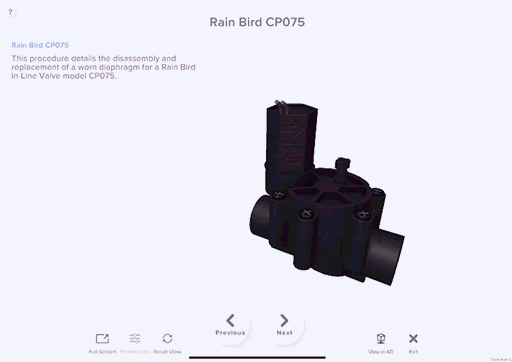
Figure 3: Immersive collaboration with HoloBeam and 3D content.
Microsoft MeshAt this year’s Microsoft Ignite 2021 Spring conference a new platform was announced called Microsoft Mesh which allows developers to create Mixed Reality apps that are connected, collaborative and cross-platform. Mesh is designed to work on HoloLens as well as PC-based VR like WinMR, HTC Vive and Oculus Rift. Soon you’ll also be able to leverage the platform on standalone VR devices like the Oculus Quest 2 with expanded support for Mac and mobile with iOS and Android.
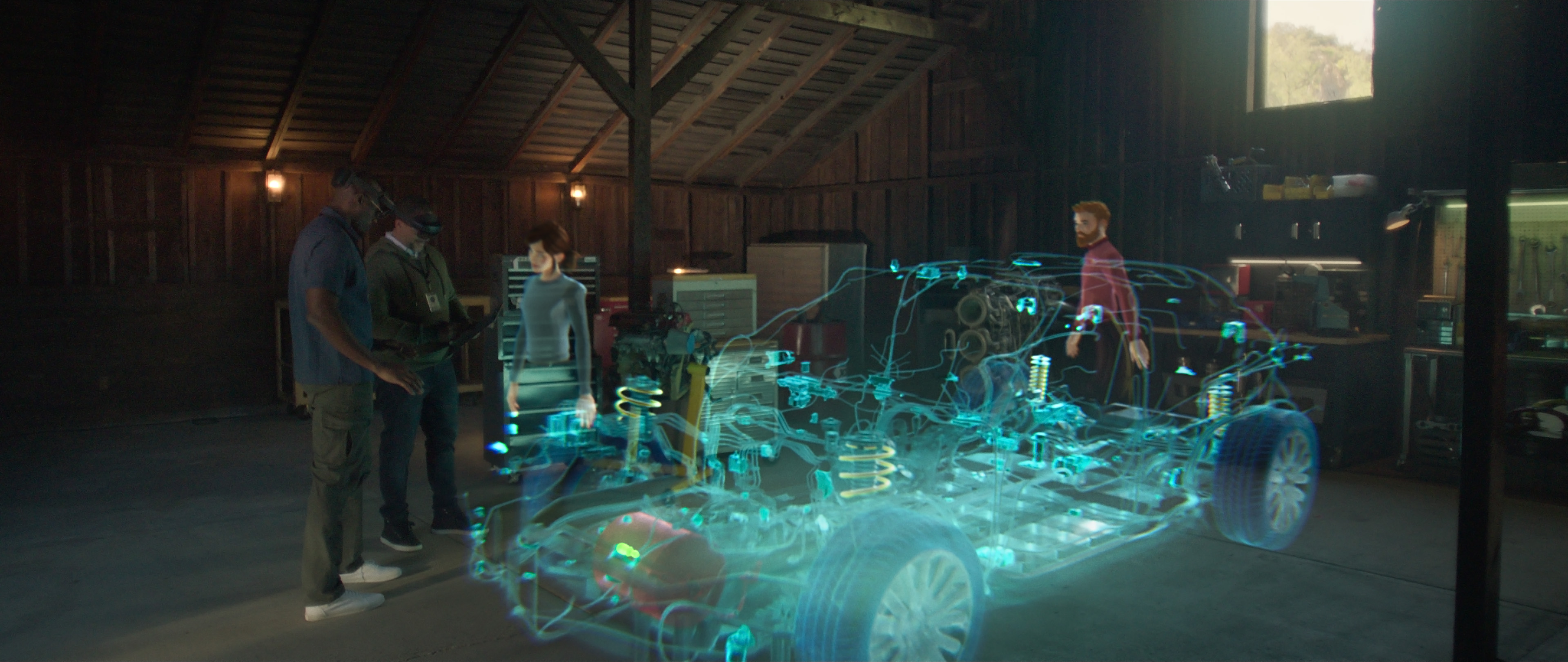
Figure 4: Microsoft Mesh in-action for collaborative design reviews.
Mesh was without a doubt one of the top highlights from Ignite, prominently featured in Satya Nadella’s and Alex Kipman’s opening keynote. The keynote itself was already quite special being held in AltspaceVR allowing attendees with VR devices to experience the presentation in 3D. This keynote was the best keynote I have ever experienced and not just for the amazing production quality and content including a nice maritime scene, guest visitor James Cameron, a giant 3D squid and a wild dance party at the end. There was also a nice moment before the keynote in AltspaceVR when I met some friends and we all chatted, just like we would have done at a real physical conference, only as avatars. This format alone was already much more immersive than just watching a stream on a website and really set the perfect stage for announcing Microsoft’s new immersive collaboration platform.
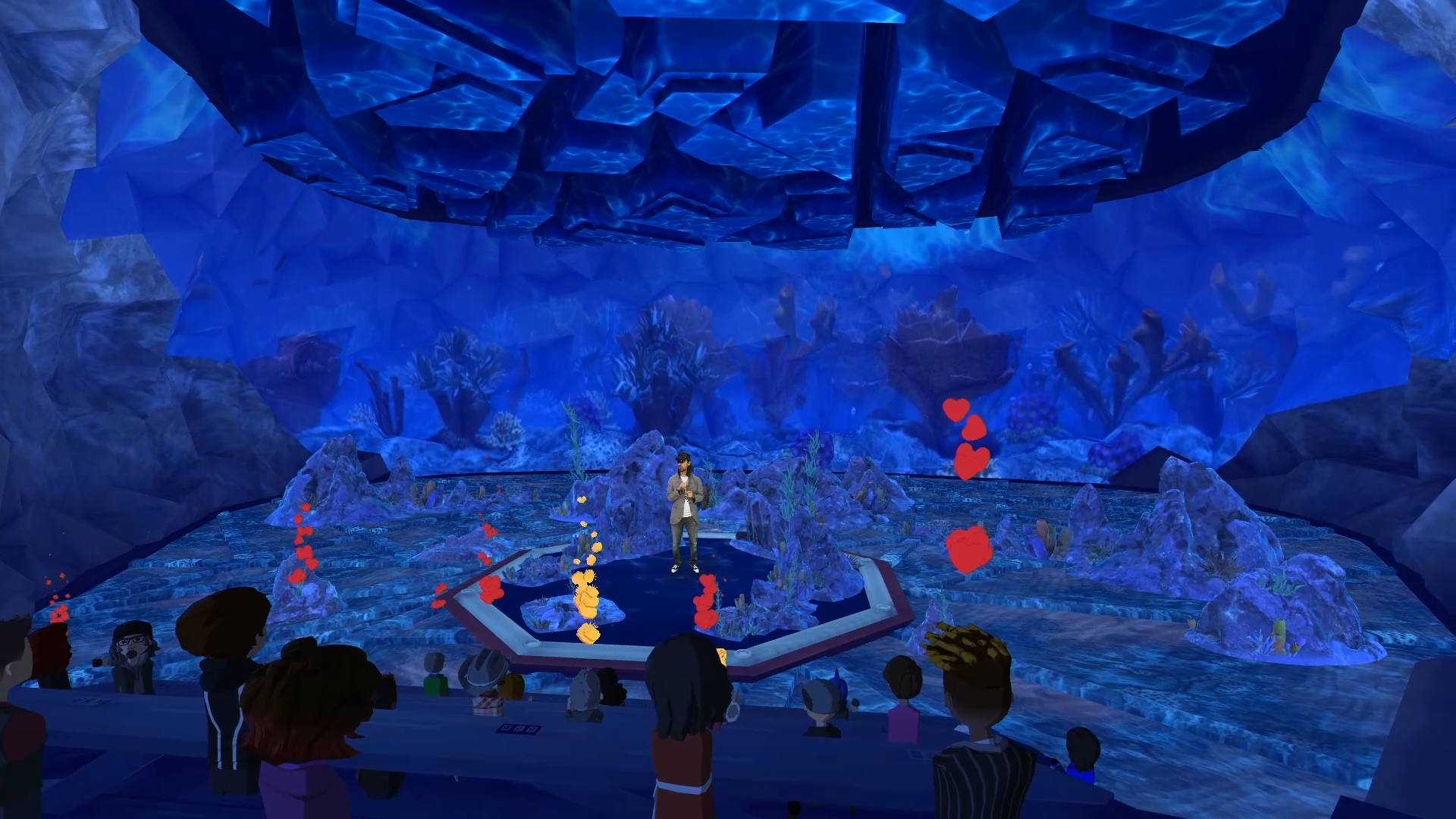
Figure 5: Microsoft Ignite keynote in AltspaceVR.
We summarized this keynote and our other favorite Ignite news and sessions in an Ignite recap video which you can watch here.
Microsoft Mesh is not an out-of-the-box product but rather a platform where developers can build custom solutions on top that can collaborate with each other. This provides much more possibilities than just a single Mesh end-user application. All of that is powered by various Azure cloud services and surfaced with a cross-platform developer SDK for AR, VR, PCs, or mobile phones with support for Unity alongside native C++ and C#. Mesh is solving the big challenges for remote collaboration app development with its 4 core capabilities.
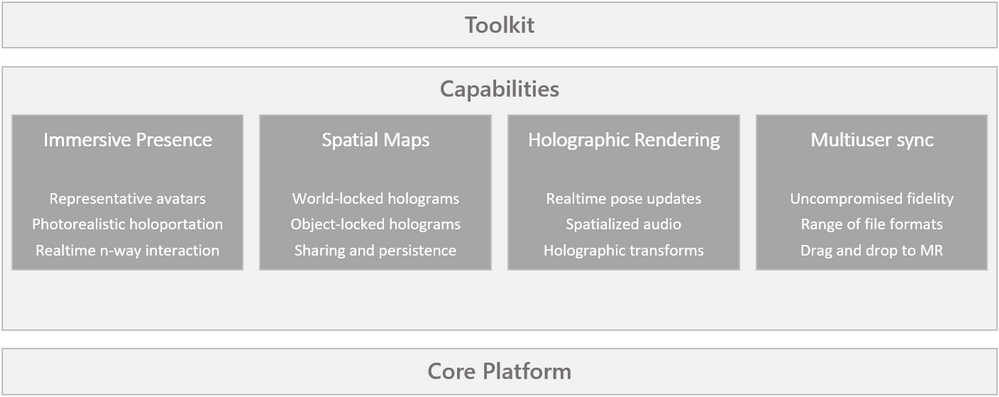
Figure 6: Microsoft Mesh capabilities.
1. Immersive Presence
To provide the most true-to-life presence, participants need to be uniquely represented as virtual figurines in a virtual world. Mesh delivers the most accessible 3D presence with built-in, customizable avatars and can drive existing avatar rigs too with its AI-powered motion models. Eye tracking is used as well to animate avatar eyes and this little detail makes a big difference in feeling much more connected with other avatar participants via eye contact. For even more enhanced presence, Mesh will also allow developers to integrate Holoportation-style 3D volumetric video. The Valorem Immersive Experiences and Digital Workplace teams are eager to explore the options to integrate our own real-time 3D video streaming solution, HoloBeam, for a truly life-like telepresence.
2. Spatial Maps
Having persisted virtual objects in the real world is a key feature for a collaboration platform but this requires a common perspective of the space around each participant as well as an understanding of the physical world via the AR Cloud. The AR Cloud, sometimes called Magicverse, Mirrorworld, Live Maps or Cloud Anchors, is essentially a Digital Twin of our world. A digital content layer that is persisted and mapped to real objects and locations in the physical world. This allows virtual content to be world-locked, shared cross-platform, between devices and over time.
Mesh is leveraging Azure Spatial Anchors which is Microsoft’s own AR Cloud implementation providing cross-platform support, true persistence and global availability in-production for Android, iOS and HoloLens devices. Additionally, Mesh can leverage Azure Object Anchors which generates the same understanding aligned to the precise layout and geometry of a physical object, allowing you to overlay it with visual information and precisely align things like instructions and other important data.
3. Multiuser Sync
Having a consistent Spatial Map is a key ingredient for sharing virtual objects with each other however, synchronizing changes to these virtual objects among all users is just as important for true remote collaboration. Real-time multiuser sync is a big challenge solved by Mesh supporting pose updates, motions, expressions, and spatial sound within 100 milliseconds of latency, irrespective if the user is in the same physical space or on the other side of the planet.
4. Holographic Rendering
Immersive Workspaces with collaboration platforms need to be able to load and visualize 3D models and allow the users to annotate these models during immersive design reviews and more. Mesh supports that with local standalone rendering or cloud-based remote rendering with a growing list of enabled 3D file formats. Mesh is leveraging Azure Remote Rendering with support for complex 3D models with millions of polygons. These large 3D models are typically generated by CAD programs and used by many companies to design their products, machines, buildings, etc. Another important application is leveraging photogrammetry 3D scans of real-world objects to act as a Digital Twin when combined with IoT. These photogrammetry 3D scans tend to be typically quite complex but now with Mesh, these can be visualized as is without a low-resolution down sampling. The business value is high when we can use a CAD design, or a 3D scan Digital Twin as is (without labor-intensive reduction steps) and show it in the context of the physical world blended in with Mixed Reality in a collaborative fashion.
Meet in MeshMesh was announced at Ignite and is currently in a limited developer preview but there is also a demo app experience that shows the platform in-action. The HoloLens 2 Mesh app (Preview) is a nice way to test drive the Mesh platform and to try out the base features. I had a great time exploring it with my colleague Jesse Havens who lives in Oregon, USA and I had no struggle connecting with Jesse through Mesh while being here in Dresden, Germany as you can see in our demo video below.
We are planning to release even more Immersive Workspaces, Mesh, Spatial Computing and AR Cloud material this year. Keep an eye on our Valorem social pages and website for details. On April 1st, 2021, you can join us for a panel discussion about Microsoft Mesh with myself and other community and Microsoft Mesh team members. You can sign up here.
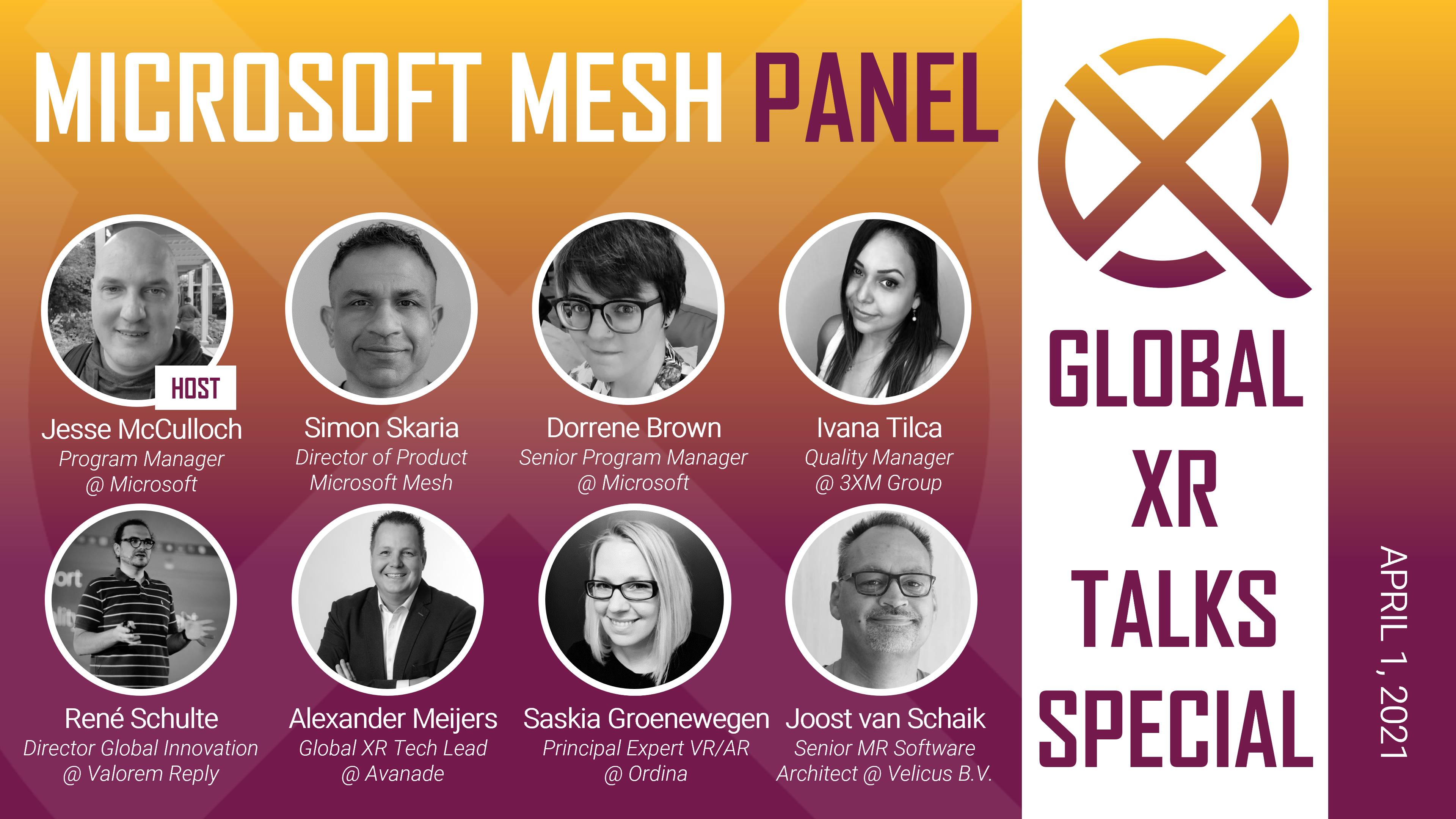
Figure 7: Microsoft Mesh Panel
Already have a Spatial Computing project with or without Mesh in mind? We would love to hear about it! Email marketing@valorem.com to schedule a consultation and maybe we can even meet in Microsoft Mesh!
